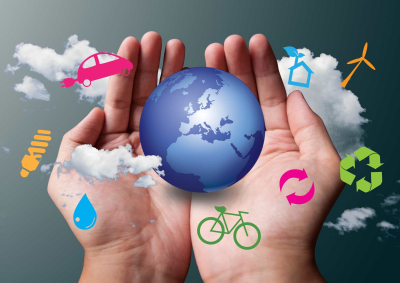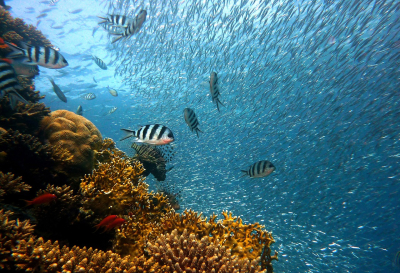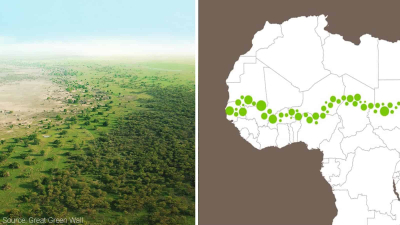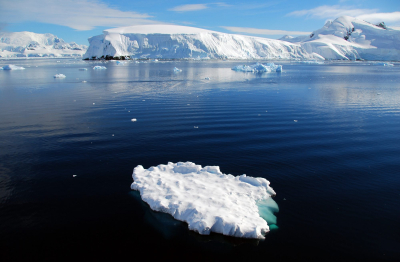
Environmental science integrates several disciplines, including ecology, biology, zoology, oceanography, atmospheric science, soil science, geology, and chemistry. It throws light on how natural and human-made processes interact with one another to impact our planet. Here's a peek into a few words related to this science
Anthropocentrism
The word means centred on humans. This belief places humans and their existence at the centre of the world to mean that we are more important than everything else. However, many have argued that this is ethically wrong and at the root of the ecological crisis staring at us today. For one, by placing ourselves above other species, we view them as resources to be exploited. And that would explain the unsustainable pace of human growth and development at the cost of other species, and, eventually, perhaps the planet itself.
Artificial selection
In nature, each living creature is different. Each finds a way to survive, and passes on the traits for survival to the next generation. This is called natural selection. In artificial selection though, humans identify desirable traits in plants and animals, and take steps to improve those traits in future generations. Also known as selective breeding, the process has pros and cons. For instance, it can result in a new disease-resistant crop with high yield but can lead to loss of diversity in the long-run.
Carbon sequestration
It refers to the long-term storage of carbon in plants, soils, geologic formations, and the ocean. This stored carbon has the potential to get released into the atmosphere as carbon dioxide, both naturally (decomposition of organic matter) and through human activities. The amount of carbon dioxide getting released into the atmosphere has been increasing, especially through human activities such as the burning of fossil fuels.
Bioaccumulation
This refers to the process in which external components – such as toxic chemicals or metals gradually accumulate within an organism-such as fish. Since any organism is part of a food chain, it affects- other organisms too. For instance, when chemicals end up in a waterbody through wind or rain, they sink to the bottom. Tiny creatures in the waterbody consume these when they dig the sediment. These creatures are consumed by larger creatures, and finally, large fish are likely to be eaten by humans. And throughout the process, these chemicals can get transferred from one organism to another, harming them.
E-waste
The shortened version of electronic waste, e-waste is non-biodegradable and includes everything from televisions and computers to mobile phones and home appliances and their components. These discarded products can contain toxic substances such as lead and mercury and also metals such as gold, silver, copper, platinum, aluminium, etc. When not disposed of properly, the toxic substances in e-waste accumulate in the environment, in the soil, air, water, and living things.
Commingled recycling
In this process, all kinds of used materials – both biodegradable and non-biodegradable – such as plastics, glass, metals, etc. are gathered in a collection truck and later sorted at a recycling unit. This process has benefits and drawbacks. The absence of segregation eliminates the need for separate trucks for different materials, cutting down on fuel, resultant emission, etc. But, it could mean contamination of materials and indifference on the part of consumers about what they use.
Rainwater harvesting
It refers to the conscious effort of collecting and storing rainwater rather than allowing it to run off. Rainwater-from rooftops, roads, open areas, etc. can either be filtered and stored or allowed into the ground. Rain is one of the few sources of clean water for us, and given the water crisis looming the world over, it is crucial to find ways to conserve this precious natural resource. Rainwater harvesting also lowers our demand on freshwater resources, slows erosion in dry environments, reduces flooding in low-lying areas, etc.
Brownfield
A brownfield is a parcel of land "that was previously used for industrial purposes and which is contaminated by low concentrations of hazardous chemicals". Most such lands are seen as requiring environmental justice because the toxins there can affect air and water quality, and, in turn, human health. Also, they have the potential to become a dumping ground for hazardous waste. "This creates a situation that deters economic development, decreases property values, and harms the aesthetic value of a community."
Waste hierarchy
This is a simple tool of evaluation used for different waste management options – from the best to the worst for our surroundings. The order in the evaluation is usually as follows: prevention, re-use, recycling, recovery, disposal. The most preferred option is to prevent waste and the least preferred choice is disposal in landfill sites. Having a proper idea of waste generated and how to handle it – whether in a small household or a large company-will go a long way in helping us be efficient with our resources and make planet-friendly choices, leading to better environmental results.
Green purchasing
Also known as sustainable or environmentally responsible purchasing, green purchasing refers to acquiring products and services with no or minimal negative effect on human health and the environment. Such a purchase takes into consideration everything from raw material sourcing to packaging and delivery. It conserves resources, cuts costs, supports local people, and encourages a greener lifestyle. In short, it is kinder to the planet and its inhabitants in every possible way.
Intercropping
You may have seen a single crop being raised on a large parcel of agricultural land. This is called monoculture. When two or more types of crops are raised simultaneously in a field, it is called intercropping. It helps in the effective use of land, offers better profit, can prevent soil erosion, improve ecosystem, etc. It also has a few disadvantages. It can be labour-intensive, time-consuming, be affected by disease, etc. But, with proper planning, intercropping can prove to be beneficial.
Picture Credit : Google






